Digital Media: Reinventing the Entertainment Industry

HOW DIGITAL MEDIA AND TECHNOLOGY IS REINVENTING THE ENTERTAINMENT INDUSTRY
"The move to digital is about utilising new capabilities to achieve transformative businesses and operating models. These capabilities open the door to a vast range of opportunities for the creative media industry." By Arindam Bhunia Can't get enough Digital Media (above) In the first edition of Cult Critic we discussed about the global trend of motion pictures around the world. Nowadays the ‘digital media’ paradigm is all set to restructure the working models for the television, music, publishing and film industries. Movies and television shows are gradually embracing the ‘on-demand’ mode on any digital device while books, newspapers, magazines and other forms of publications are reinventing themselves on interfaces such as mobile phones and tablets. So, in the second edition of Cult Critic we will discuss how Digital Technology is regenerating Entertainment And Media Industry as well as World Cinema. Rapid technological innovations over the past 10 years have disrupted entertainment distribution in an unprecedented way. As personal computers, laptops, tablets, and smartphones have become common household goods, emerging companies have embraced technological advancements and incorporated them into their business models to create a revolution in the way that audiences consume entertainment.
The impact of digital media on our everyday lives and economic interactions is undeniable. In conjunction with megatrends such as globalization, climate change, urbanization, and aging populations, DIGITAL TECHNOLOGY is helping to transform our society and the economic structures that have formed the basis of industries since the Industrial Revolution. From all accounts, ‘digital’ is the new buzzword in the entertainment and media (E&M) industry. Creators can more readily pursue opportunities outside traditional studios and distribution channels. The move to digital is about utilizing new capabilities to achieve transformative businesses and operating models. These capabilities open the door to a vast range of opportunities for the creative media. The following table expands on these opportunities, defines the trends observed, and identifies key success factors:
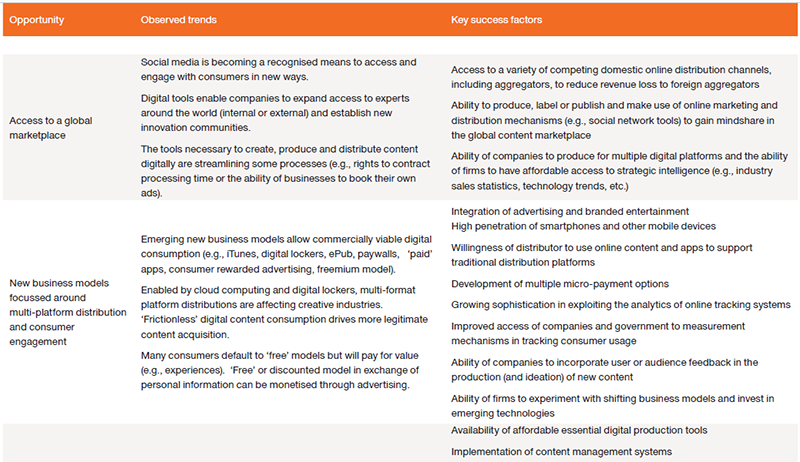
Due to social media and other digital communication channels, digital media companies can actively integrate consumers into their value-creation processes. This allows them to exploit consumers’ potential (usually at a very low cost or even for free) to create additional value. In the case of media companies, the integration can occur at any of the three stages of the traditional value chain: content creation, bundling, and film distribution.
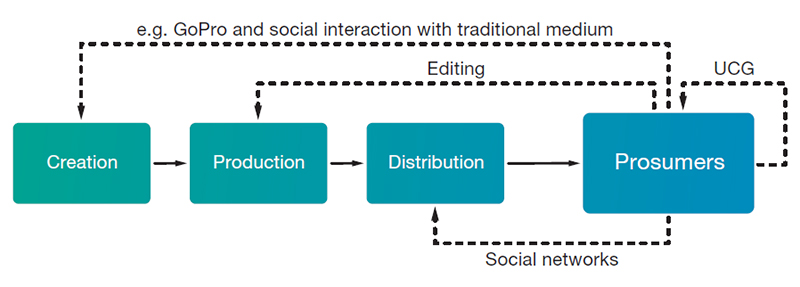
As per the global media report, by 2019 digital spending will account for more than 50 percent of overall media spend. Within this, digital video spending will overtake physical spending by 2018. Digital, consisting of Internet and mobile advertising, will become the largest advertising category by 2017, surpassing TV one year earlier than forecast, and mobile will more than double its share of the digital ad market. Developing markets are playing an increasingly critical role in global media growth, not only because traditional media in these regions remain strong, but because these film markets, from Mexico and China to India and Malaysia, anticipate healthy economic expansion and increasing household incomes—particularly in Asia Pacific (AP) and Central and Eastern Europe (CEE). This growth will boost both advertising and content spend across the region. Global media report also says that digital advertising, video games, and broadband to continue to be the fastest-growing segments over the next five years, with projected compound annual increases to 2019 of 12.7 percent, 8.1 percent, and 7.8 percent, respectively. Cinema will expand at a projected 5.4 percent CAGR, followed by TV advertising at 5.0 percent and out-of-home at 4.9 percent, with in-home video entertainment next at 3.4 percent compounded annual growth. Audio entertainment, educational publishing, and consumer books will grow at compound annual rates of 2.0 percent or less, while consumer magazines and newspaper publishing will each be somewhat lower in 2019 than in 2014. Total global media spending will rise from US $1.6 trillion in 2014 to a projected US $2.1 trillion in 2019, a 5.1 percent compounded annual increase.
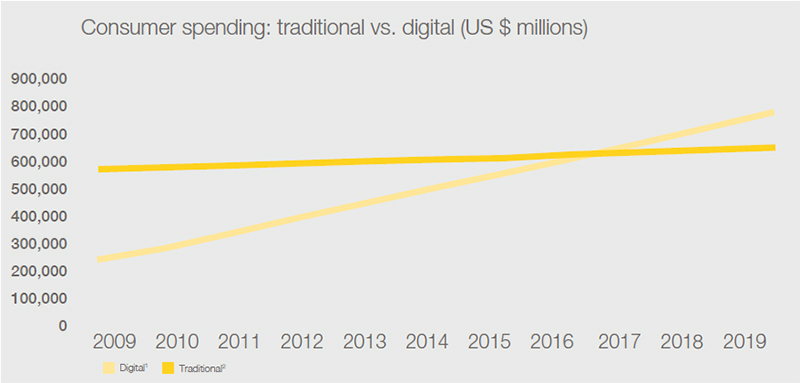
Considering the competition among the multitude of apps across social media, games, messaging, e-commerce, fitness, dating, music, personal finance, travel, and even user-generated photos and videos — and limited available real estate on mobile device home screens — the fight for users among E&M companies will be brutal. And, notably, Mobile connectivity has increased dramatically around the world over the past decade. It is predicted that there will be 9.2 billion active mobile subscriptions by 2019.
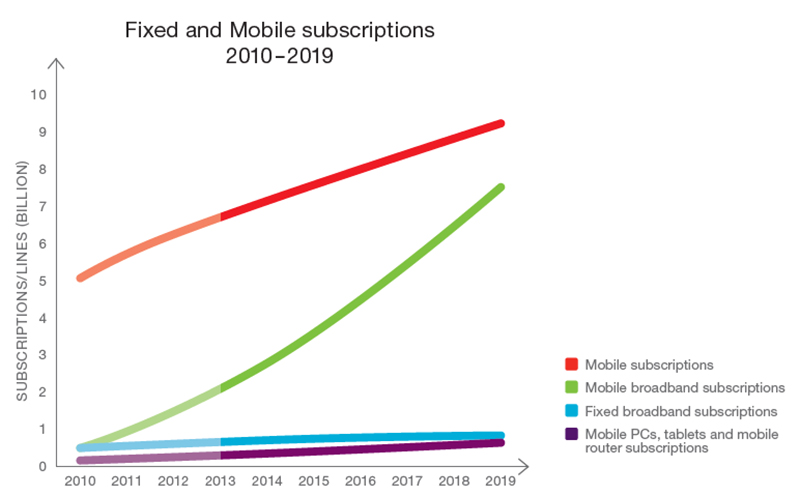
And at least 2.6 billion of these mobile subscriptions will be on Long Term Evolution or LTE networks, providing high-speed and seamless video access for end users. The role that mobile connectivity now plays in the media industry – and society as a whole – cannot be understated. 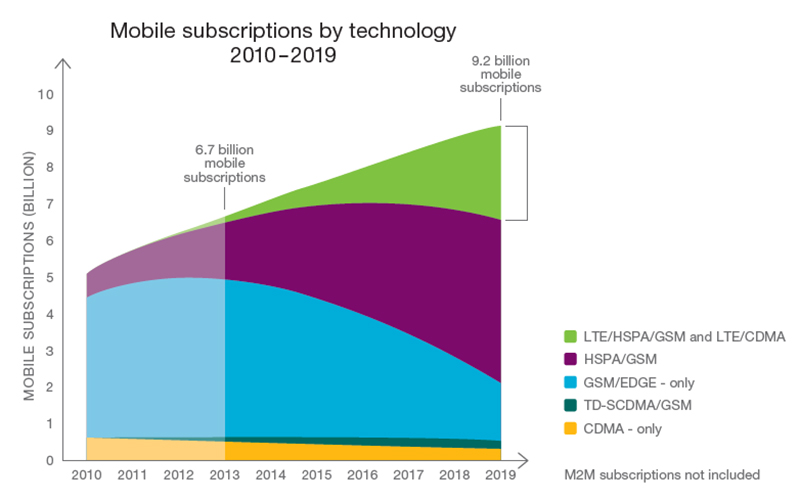
According to report, Users spend 71 percent of their time on mobile devices using apps. Media access through mobile devices is the fastest-growing sector of global media spending. The advent of smartphones and tablets has substantially improved the mobile broadband experience, contributing greatly to the surge in mobile broadband penetration. Globally, mobile broadband penetration rose 24 percentage points over the past five years, nearly twice the 13.5 percentage-point increase in fixed broadband penetration. As per report, over the next years, mobile broadband penetration to overtake fixed broadband, rising to 58.3 percent of the total in 2019.
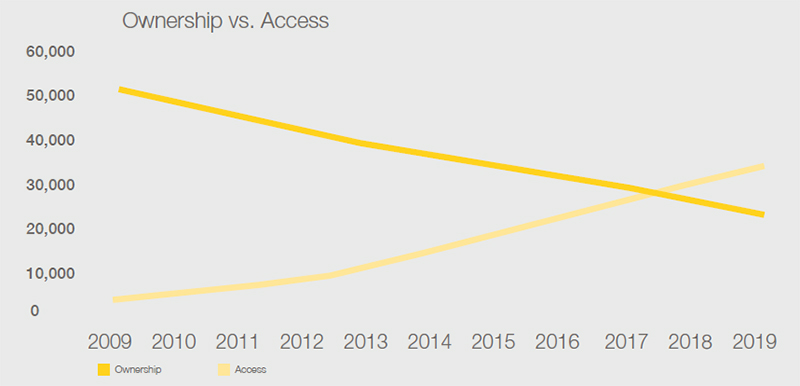
Reflecting the growth in mobile broadband penetration, consumers and advertisers are allocating increasing shares of their digital expenditures to mobile. In the coming years, it is projected that mobile spending to increase at a 13.5 percent CAGR, nearly twice the 6.9 percent CAGR projected for non-mobile digital spending. Mobile will account for 43 percent of total digital spending in 2019 as a result. It is expected that mobile to overtake non-mobile digital spending in the next decade, becoming the principal digital platform.

Looking at individual segments, we project video games and broadband to continue to be the fastest growing, with compound annual increases of 7.7 percent and 7.8 percent, respectively. Cinema, at 5.3 percent, and in-home video, at 3.4 percent, will be the only other categories to expand at compound annual rates of 3 percent or more. China alone will generate 34 percent of the global increase in box office spending, as new cinemas opening in underserved areas expand that market. In the in-home video market, double-digit growth in over-the-top (OTT) services will be countered by a maturing pay TV market, declines in physical home video, and a slow-growing public service broadcasting market, resulting in slower projected growth in this segment compared with the past five years. Compound annual growth for the print categories—newspapers, magazines, consumer books, and educational publishing—will range from 1.4 percent to -1.0 percent.

The key development in the film market is the shift in advertising from traditional to digital media. Advertising in digital media rose 16.1 percent in 2014, while ads in the remaining media increased a collective 1.6 percent. This discrepancy is not new. Over the past five years, digital advertising has expanded at a 16.1 percent CAGR, compared with 2.2 percent growth compounded annually for non-digital advertising. This trend reflects enormous growth in the broadband universe. As the fixed and mobile broadband universe has grown, media usage has steadily transitioned from traditional to digital.
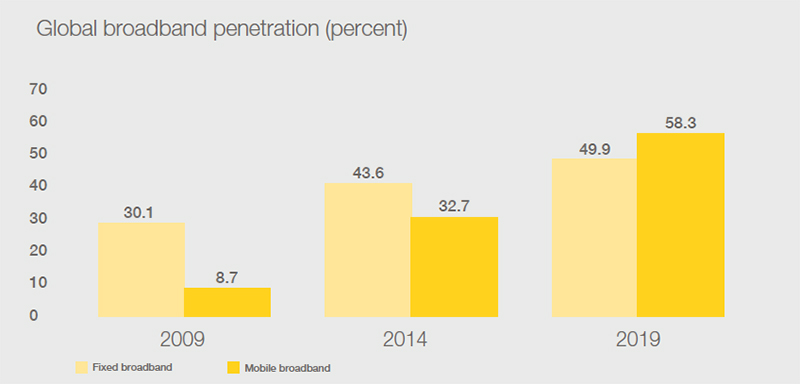
As more and more people will have a broadband connection, opportunities for digital spending on the part of consumers will multiply. In addition to broadband subscriptions, consumer digital spending will contribute an incremental US $77 billion over the next years. Digital spending as a whole will increase at a 9.5 percent CAGR, well above the 1.7 percent projected for non-digital spending. High-speed Internet is rapidly emerging as one of the most powerful film distribution channels for media content. Internet-based distribution channels are increasingly being viewed as serious competition to customary media outlets. Currently, the leaders of online content/digital media and distribution include Netflix and Hulu. Netflix established in 1999, has evolved from a mail-order DVD rental company to an online streaming service. Competing with Blockbuster, it allowed consumers to conveniently rent movies from the comfort of their own homes through the Internet. Netflix’s online streaming features elevated their major source of revenue, serving more than 40 million digital media subscribers. With rapid success and growth over a relatively short period, the company has begun producing its original content including ‘House of Cards’ and ‘Orange is the New Black’. In 2008 Hulu emerged into the online film distribution market. One may argue that cable and satellite offer more channels and commercialized content that others may not have access to, but it is important to note that Netflix and Hulu offer a wide selection of popular programming from major media companies such as NBC Universal and ABC Television. There was a time when people used to watch analog films and now, the movies that we watch in cinemas are ‘digitized’. It is due to digitalization that audiences are entertained with clearer pictures and sharper sounds. The advent of 3D, 4D, and 5D films is an example of the advancements of digital media in the entertainment industry. Listeners can download songs through the Internet or watch music videos online. The ‘second screen’ phenomenon has taken the world by storm. In a whole digitalization is a revolution unlike any.
*REFERENCES: McKinsey Global Media Report ICT Report
Arindam Bhunia is a marketing manager in an MNC with more than eight years of work experience in electrical field. Apart from his corporate job, he has interest in cultural activities so he joined Human Lab Corporation as Chief Executive Officer. He oversees strategic planning for film, television and video game production, marketing and distribution for the company’s business verticals worldwide. He is also responsible for overseeing finance, legal, labour relations, technology and HLC Studio operations.


